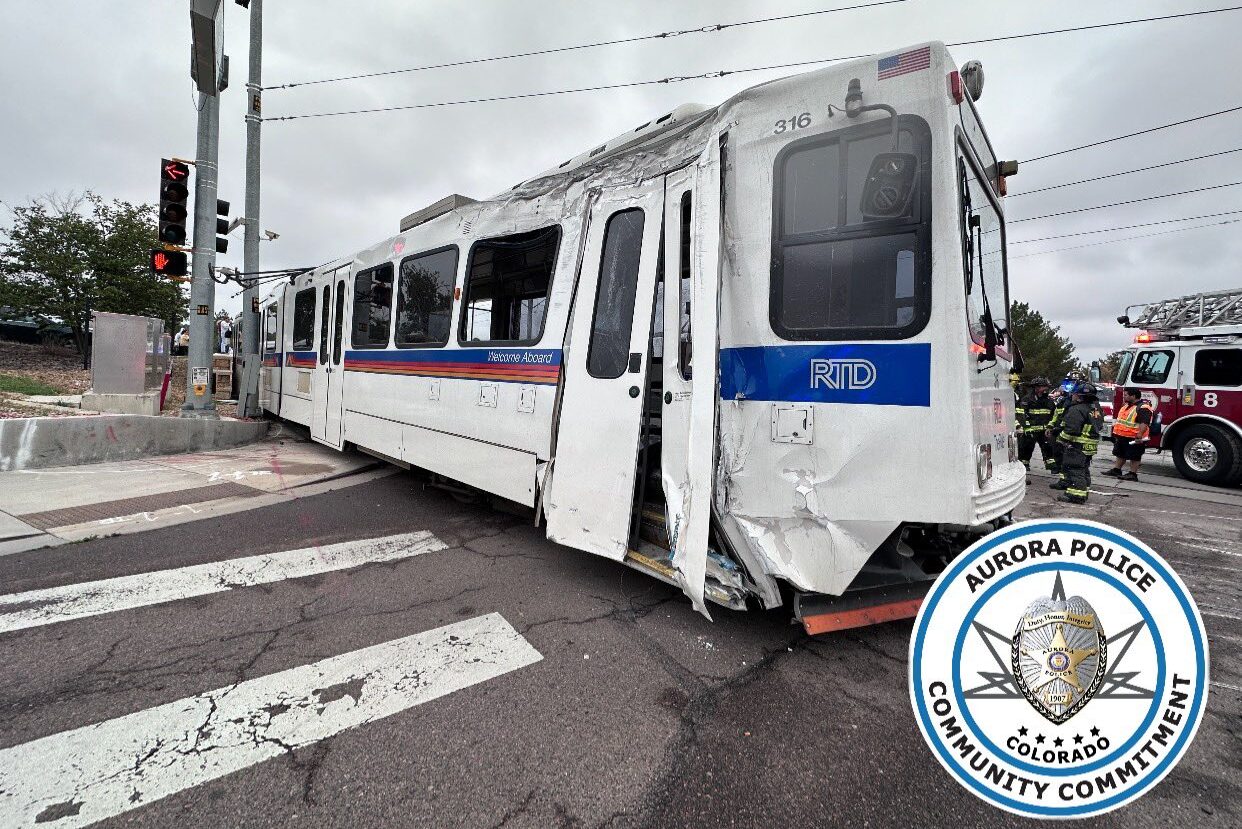
Danny Casabianca wasn’t surprised when he heard a Regional Transportation District R Line train derailed near the Town Center at Aurora shopping mall a few weeks ago.
Casabianca has been an RTD light-rail operator for more than four years. Of all of RTD’s eight light-rail lines across the metro region, he considers the middle section of the R Line to be one of the most stressful and dangerous to navigate.
The reason? A series of 90-degree curves in the track.
“Any minor incident just turns into a major one on corners like that,” said Casabianca, who’s also an assistant steward with the ATU Local 1001.
The mid-September derailment was the second in the last four years at the corner of South Sable Boulevard and East Exposition Avenue. A video of the most recent derailment suggests the operator could have been speeding, though RTD is still investigating and won’t discuss specifics yet.
Its investigation of the 2019 derailment — which resulted in a woman’s leg being severed — faulted the driver for speeding, and RTD’s safety regulator, Colorado’s Public Utilities Commission, agreed.
That investigation also concluded that the rail line itself was safe and that the likelihood of another derailment “cannot be dismissed, but it is remote at best.” But now that it’s happened again at the exact same spot — and with one of the exact same rail cars, number 316, on which RTD would also not elaborate — Casabianca said the two incidents suggest there’s another explanation beyond human error alone.
“There’s something wrong in the design,” he said, adding: “A lot of [R Line drivers] don’t like it because of that area.”
The president of the ATU Local 1001, Lance Longenbohn, acknowledged there could be other contributing factors beyond the R Line's design. RTD declined a request for comment on the safety of the design.
An independent transit safety expert, however, told CPR News it appeared to be safe. But, he also said improvements could be made to reduce the risk of future crashes.
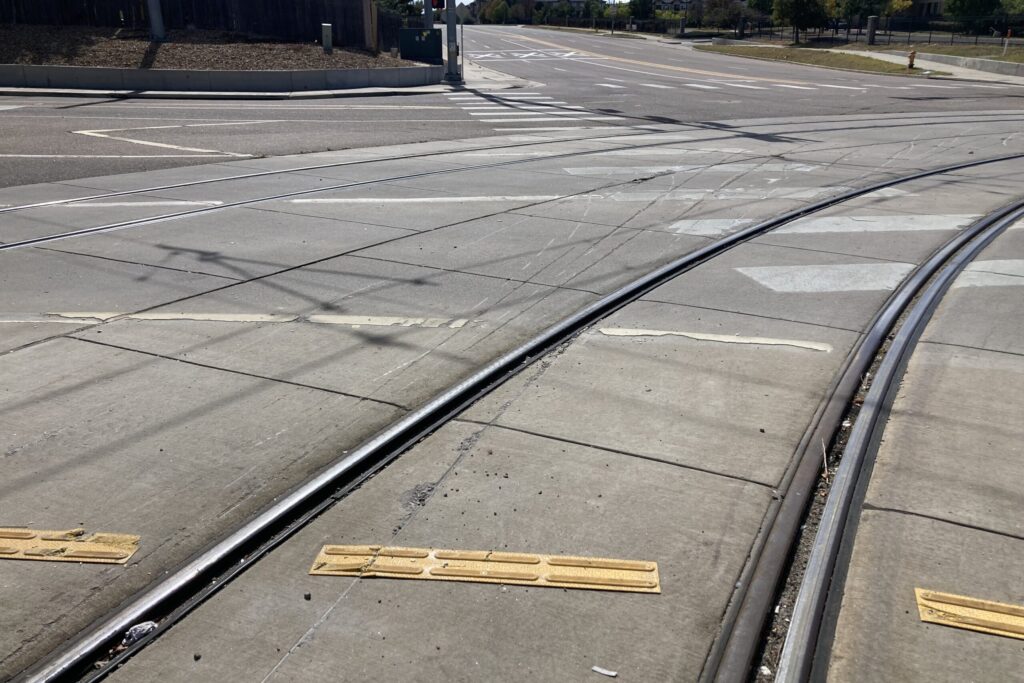
RTD’s light-rail lines typically stay straight or have gentle curves. The R Line is an exception.
RTD built most of its rail lines directly adjacent to highways and freight rail corridors to serve suburban commuters trying to get to downtown Denver. While some lines, like the W Line in the west metro, have a handful of tight turns, most stay on relatively straight paths outside of downtown. That helps trains reach top speeds of 55 mph.
The R Line is different. The line’s northern half roughly parallels Interstate 225 through Aurora — but only roughly. The track makes eight sharp turns between Peoria Station to the north and Florida Station to the south.
RTD’s first light-rail plans for the I-225 corridor, completed in the 1980s, envisioned a track that ran along the highway. But by the early 2000s, the plans grew significantly more complicated.
Aurora city leaders pushed RTD to zigzag the rail to better serve two areas primed for more transit-friendly redevelopment: the University of Colorado Anschutz Medical Campus north of Colfax Avenue — although CU leaders later successfully pushed RTD to move its station to the campus’ edge, making it less useful — and Aurora’s Town Center area.
"We can't see a station in the median of 225 (west of the mall) as attractive," Mac Callison, then-Aurora's principal transportation planner, told the Denver Post in 2001.
A 2001 RTD-sponsored study forecasted that the Town Center diversion would slow down trains and attract fewer riders compared to a freeway-adjacent line. But it ultimately endorsed the changes that Aurora wanted.
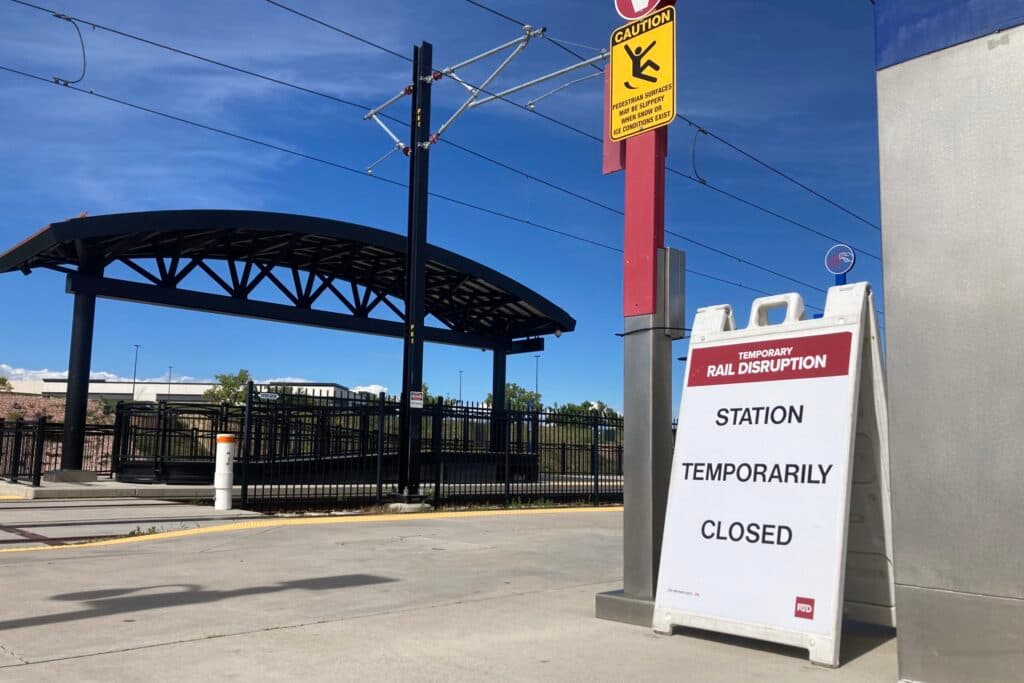
“It was one of those things that was very important for them,” Chris Quinn, an RTD project manager who had a hand in the 2001 study, said in a recent interview.
The study’s lower ridership forecast turned out to be prescient, at least so far. The Aurora Metro Center station averaged just 936 daily users in the summer of 2022, making it the 43rd-most popular station in RTD’s system. The R Line’s ridership, in general, has struggled since it opened in 2017.
“The low ridership is a direct relation of some members of the community who wanted it to be the way it is right now,” RTD’s then-spokeswoman Pauletta Tonilas said in an interview last year.
That could change as more transit-oriented development is built. RTD expects 2,298 new homes to be built near R Line stations, according to a recent report. And the city of Aurora is slowly working toward a new “downtown” on vacant land near the Aurora Metro Center station.
“It has enormous potential to become an even more important economic, employment, cultural, and community destination,” Aurora city spokesman Michael Brannen wrote in an email. He added:
“Keeping the light-rail alignment in the center of the interstate, instead of providing direct rail service to the City Center area as originally proposed, wouldn’t have fostered a true urban environment or provide the greatest accessibility for the most people.”
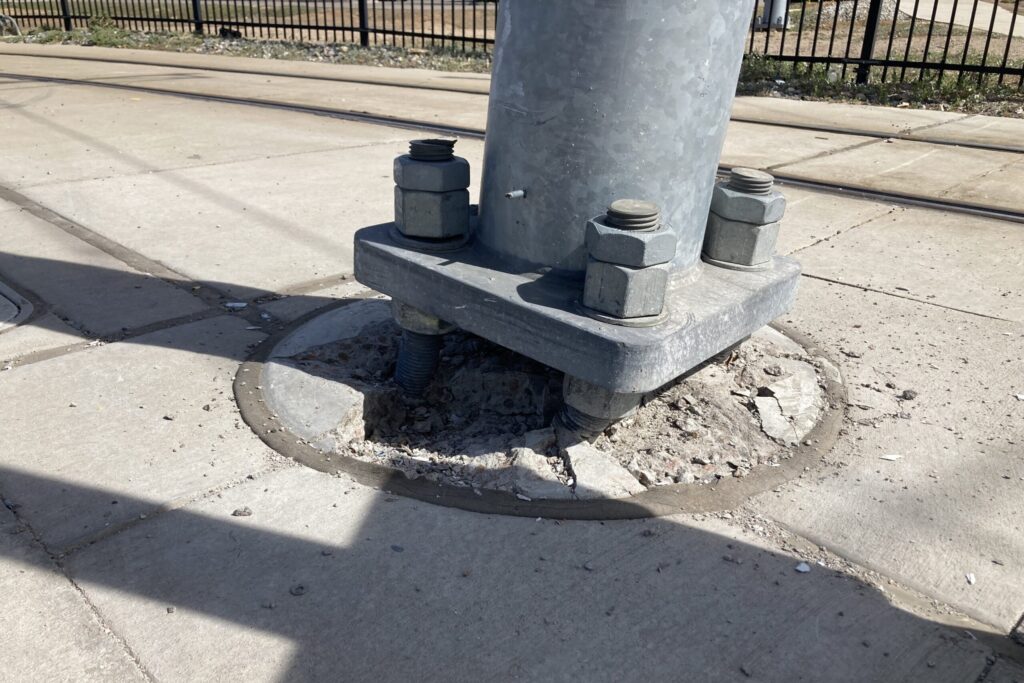
Are the R Line’s curves really a safety problem? And what can be done to make them safer?
The 2001 study contemplated separating the track from nearby street traffic, typically done through bridges or tunnels, but ultimately concluded they’d be too costly.
The mix of straightaways and sharp turns that were ultimately constructed make for difficult driving, said Casabianca, the train operator and union steward. He said southbound trains must hit 35 mph after leaving the Aurora Metro Center station to stay on schedule with timed traffic lights, then decelerate to just 10 mph a quarter-mile later to make the turn through a busy intersection.
“If you get distracted, it’s scary,” he said. “Someone running — a dog, a cat, a person — you pay attention to that … Then, oh crap. The curves come up. And if you hit that at 15 [mph], it’s scary.”
In a statement, an RTD spokesman disputed that characterization and said, “there is no negative consequence” for operators driving lower than the speed limit.
An industry expert also disagreed with Casabianca, saying nothing unique or inherently dangerous about the R Line’s design. At CPR News’ request, Graham Currie, professor of public transit at Monash University in Melbourne, Australia, reviewed documents on the 2019 derailment, video of the most recent crash, and images of the R Line’s alignment.
“The idea that you would go fast and the idea that you go around corners is a fact of life,” Currie said, adding: “I would be very surprised to find that the design is overly problematic.”
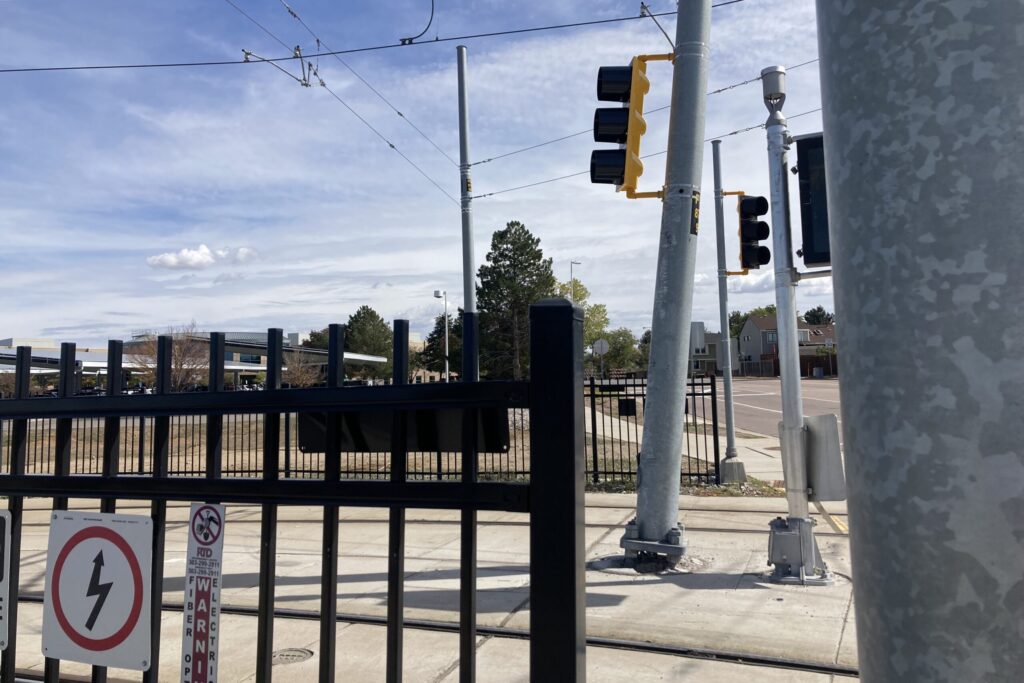
Currie said tricky sections of track demand the full attention of drivers, which can actually make them safer. The issue, he said, is drivers’ ability to sustain that through an entire shift.
“Vigilance has always been a problem on all types of rail, even heavy rail and commuter rail,” he said.
Currie said problem locations, like the Sable and Exposition curve, can be addressed without a complete redesign by adding things like track-side lights that flash if drivers are speeding, in-cab warnings, or even a driver assist system.
RTD considered one after the 2019 crash — an “enhanced automatic train control” system that could remotely override speeding trains. But by early 2021, RTD told the PUC it couldn’t afford the $12 million to $15 million cost.
The Colorado PUC declined to comment on the most recent derailment beyond saying it’s following RTD’s investigation and will continue to work with the agency. A spokesperson for the Federal Transit Administration, which supports and regulates light-rail systems in conjunction with state governments, said it is “coordinating closely” with state regulators.
Editor's note: This story has been updated to include comments from the president of the ATU Local 1001.








